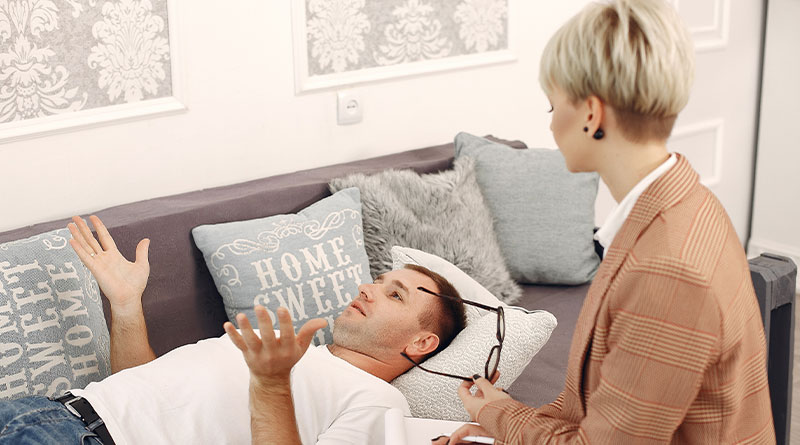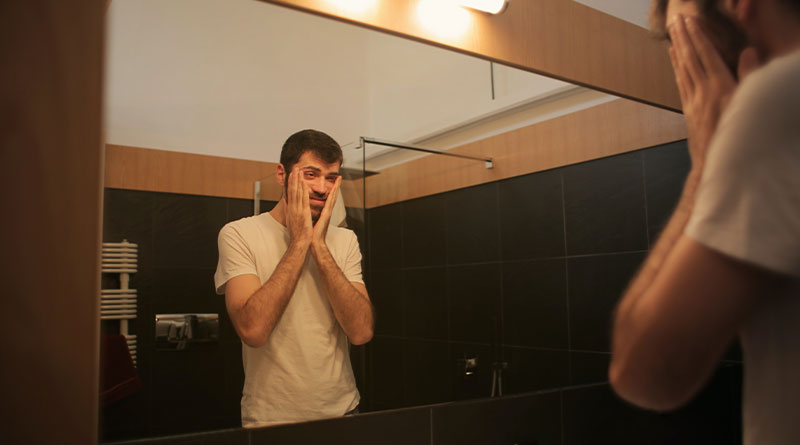Are you tired of suffering from migraines? Want to find the right treatment to relieve the pain and discomfort? Explore our comprehensive guide on treatments for migraine now.
Migraines are a type of headache that can cause intense pain, nausea, and sensitivity to light and sound. Characterized by intense headaches, sensitivity to light and sound, and nausea, migraines can make it difficult to perform daily tasks and enjoy life to its fullest. Unfortunately, finding relief from migraines can be a challenge, as there is no one-size-fits-all solution.
However, with the right treatment plan, it is possible to reduce the frequency and severity of migraines and improve quality of life.
Understanding the Causes of Migraines
Migraines are a complex condition that can be caused by a variety of factors. Understanding the causes of migraines is essential for effectively managing the condition. Some of the most common causes of migraines include:
Hormonal Changes: Hormonal changes, such as those experienced during menopause or the menstrual cycle, can trigger migraines in some individuals.
Genetics: There is a strong genetic component to migraines, and individuals who have a family history of migraines are more likely to develop the condition.
Triggers: Certain triggers, such as stress, changes in sleep patterns, and certain foods, can bring on migraines in some individuals.
Environmental Factors: Exposure to bright lights, loud noises, and strong odors can trigger migraines in some individuals.
Also Check: Menstrual Irregularities
Medical Conditions: Certain medical conditions, such as high blood pressure, depression, and anxiety, can contribute to the development of migraines.
Dehydration: Not getting enough water or losing too much fluid can lead to dehydration, which can trigger migraines.
Weather Changes: Changes in barometric pressure, such as those associated with a storm, can bring on migraines in some individuals.
Skipped Meals: Going too long without eating can cause low blood sugar, which can trigger migraines.
Alcohol: Consuming alcohol, especially red wine, can trigger migraines in some individuals.
Caffeine: Consuming too much caffeine or suddenly stopping caffeine consumption can trigger migraines.
Medications: Certain medications, such as birth control pills and nitroglycerin, can trigger migraines.
Food Additives: Certain food additives, such as aspartame and monosodium glutamate (MSG), can trigger migraines in some individuals.
Physical Factors: Physical factors, such as poor posture or neck strain, can contribute to the development of migraines.
Classifying the Pain: Differentiating the Types of Migraines
Migraines are complex conditions that can present in different ways. Understanding the different types of migraines is essential for effectively managing the condition.
Some of the most common types of migraines include;
Migraines with Aura: Migraines with Aura involve visual changes such as flashing lights or blind spots before the headache begins. This type of migraine affects about one in four individuals who experience migraines. The aura can last anywhere from a few minutes to an hour and is often followed by a headache that can last for several hours or days. Some individuals may also experience other symptoms during the aura, such as difficulty speaking, weakness in the limbs, or tingling sensations.
Chronic Migraine: Chronic migraine involves having a headache for 15 or more days per month for at least three months. Chronic migraines can have a significant impact on an individual’s quality of life, as they can interfere with daily activities, work, and social life. Individuals with chronic migraines may experience symptoms such as headaches, neck pain, and fatigue.
Vestibular Migraine: Vestibular migraine is characterized by dizziness, vertigo, and balance problems. Vestibular migraines can make it difficult for an individual to carry out daily activities, as they can cause a sensation of spinning or unsteadiness. Some individuals may also experience symptoms such as nausea, headaches, and sensitivity to light and sound.
Menstrual Migraine: Menstrual migraine is associated with the menstrual cycle and can occur before, during, or after a woman’s period. Hormonal changes can play a role in the development of menstrual migraines, as the fluctuations in estrogen levels can trigger headaches in some individuals. Symptoms of menstrual migraines can include headaches, nausea, and fatigue.
Also Check: Trust Issues
Vestibular Migraine: Vestibular migraine is characterized by dizziness, vertigo, and balance problems. Vestibular migraines can make it difficult for an individual to carry out daily activities, as they can cause a sensation of spinning or unsteadiness. Some individuals may also experience symptoms such as nausea, headaches, and sensitivity to light and sound.
An Overview of Conventional Treatments for Migraine
Find below we discuss the treatments for Migraine, Let’s explore;
Medication
Medications are a common treatment option for migraines. Over-the-counter pain relievers, such as ibuprofen and aspirin, can help to relieve mild headaches. For more severe migraines, prescription medications such as triptans may be recommended. Triptans work by narrowing blood vessels in the brain, which can help to reduce the severity of headaches.
Some medications may also be taken daily to help prevent migraines from occurring in the first place. It is important to work with a healthcare professional to determine the best medication plan for your individual needs.
Lifestyle Changes
Making lifestyle changes can also help to reduce the frequency and severity of migraines. This may include practicing stress-management techniques, such as meditation or yoga, and getting adequate sleep each night. It is also important to pay attention to triggers that may bring on migraines, such as certain foods or changes in weather, and to avoid these triggers when possible. Find below;
- Diet and Nutrition: The foods we eat can have a big impact on our migraines. Certain foods and drinks, such as alcohol, aged cheese, and processed foods, can trigger migraines in some people. Eating a healthy and balanced diet that is rich in fresh fruits, vegetables, and whole grains can help prevent migraines.
- Exercise: Regular physical activity can help to reduce the frequency and intensity of migraines. Exercise helps to reduce stress and tension in the body, and it can also help to improve sleep quality, both of which are important in preventing migraines.
- Sleep Hygiene: Getting enough sleep is important for preventing migraines. Sleep helps to refresh and restore the body, and it can also help to reduce stress and tension. Maintaining good sleep hygiene, such as going to bed and waking up at the same time every day and creating a dark, quiet, and cool sleep environment can help to prevent migraines.
Therapy
Therapy, such as cognitive behavioral therapy (CBT), can also be an effective treatment option for migraine sufferers. CBT is a form of therapy that helps individuals to change negative thought patterns and behaviors that may be contributing to migraines. This type of therapy may also be used in conjunction with other treatments, such as medication and lifestyle changes, to maximize relief from migraines.
Also Check: All You Know About Anxiety
Biofeedback
Biofeedback is a non-invasive treatment that uses electronic devices to help individuals become aware of and control their physical responses. In the case of migraines, biofeedback can help individuals learn to control their headaches by controlling muscle tension, heart rate, and skin temperature.
Through biofeedback, individuals can learn to identify and reduce the physical triggers that contribute to their migraines, such as stress and muscle tension.
Acupuncture
Acupuncture is a traditional Chinese medicine technique that involves inserting fine needles into specific points on the body. It is believed that this stimulation helps to balance the flow of energy, or qi, in the body and relieve pain. In the case of migraines, acupuncture can help to relieve headache pain and reduce the frequency of migraines by targeting specific points on the head, neck, and face.
Cognitive Behavioral Therapy
Cognitive behavioral therapy (CBT) is a form of talk therapy that focuses on changing negative thought patterns and behaviors. In the case of migraines, CBT can help individuals identify and change negative thought patterns and behaviors that contribute to their headaches, such as stress, anxiety, and depression.

By teaching individuals new coping strategies and stress management techniques, CBT can help them find relief from their migraines and improve their overall quality of life.
Botox
Botox is a medication that is commonly used to treat wrinkles and fine lines, but it has also been found to be an effective treatment for chronic migraines. Botox works by relaxing the muscles that cause headache pain. Injections are given in specific areas on the head, neck, and shoulders, and can provide relief for up to three months.
While Botox is generally considered safe and effective, it is important to work with a healthcare professional to determine if it is the right treatment option for you.
Importance of Consulting with a Doctor for Migraines
If you are suffering from migraines, it is important to consult with a doctor to receive an accurate diagnosis and determine the best course of treatment. Your doctor can help you in several ways, including;
- Diagnosing the type of migraine you have
- Assessing the severity and frequency of your migraines
- Identifying any potential triggers
- Developing a personalized treatment plan
- Prescribing medication to help manage symptoms
- Recommending lifestyle changes to reduce the frequency and severity of migraines
- Referring you to a specialist for additional treatment, such as cognitive behavioral therapy or acupuncture
- Monitoring your progress and adjusting your treatment plan as needed
Working with a doctor to find relief from migraines is essential, and they can provide support and guidance every step of the way.
Conclusion
Finding relief from migraines is crucial for sufferers, and there are many effective treatments available. Here this blog shares a comprehensive overview of the different types of migraines, triggers, and treatments for migraine. By understanding the causes and effects of migraines, sufferers can work with their doctor to find the right treatment plan that works for them.
Also Check: Potential Causes of Low Libido
If you or someone you know suffers from migraines, this information can be a helpful starting point for discussing your options with a healthcare professional. Don’t let migraines control your life, with the right support, you can find relief and live a happier, more fulfilling life.
Sahil Sachdeva is the Founder of curemedoc.com and a Digital Marketing professional with 6+ years of experience. If you need help in Content writing and want to increase your website ranking, connect with him, as he has some premium websites where you can share blogs with DoFollow links and increase your website’s ranking on Google.





